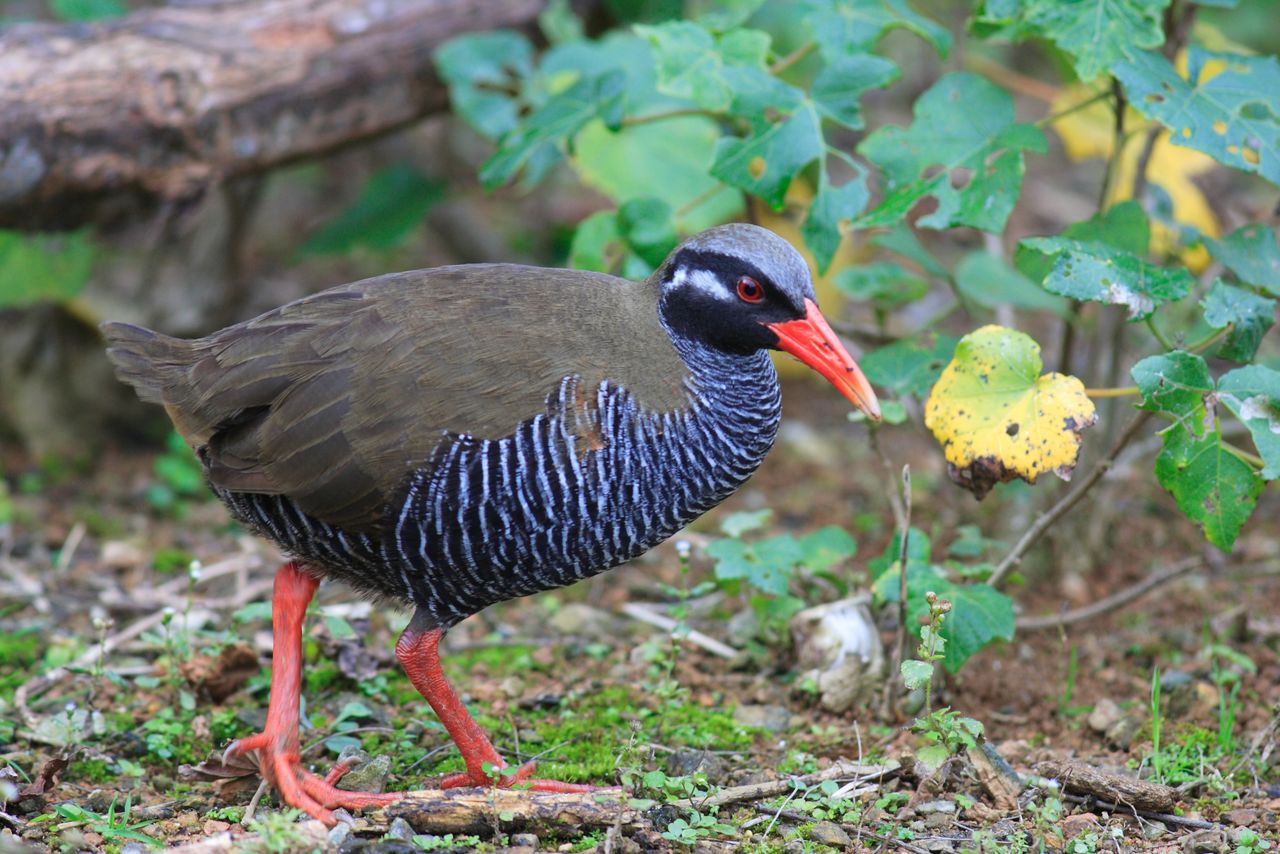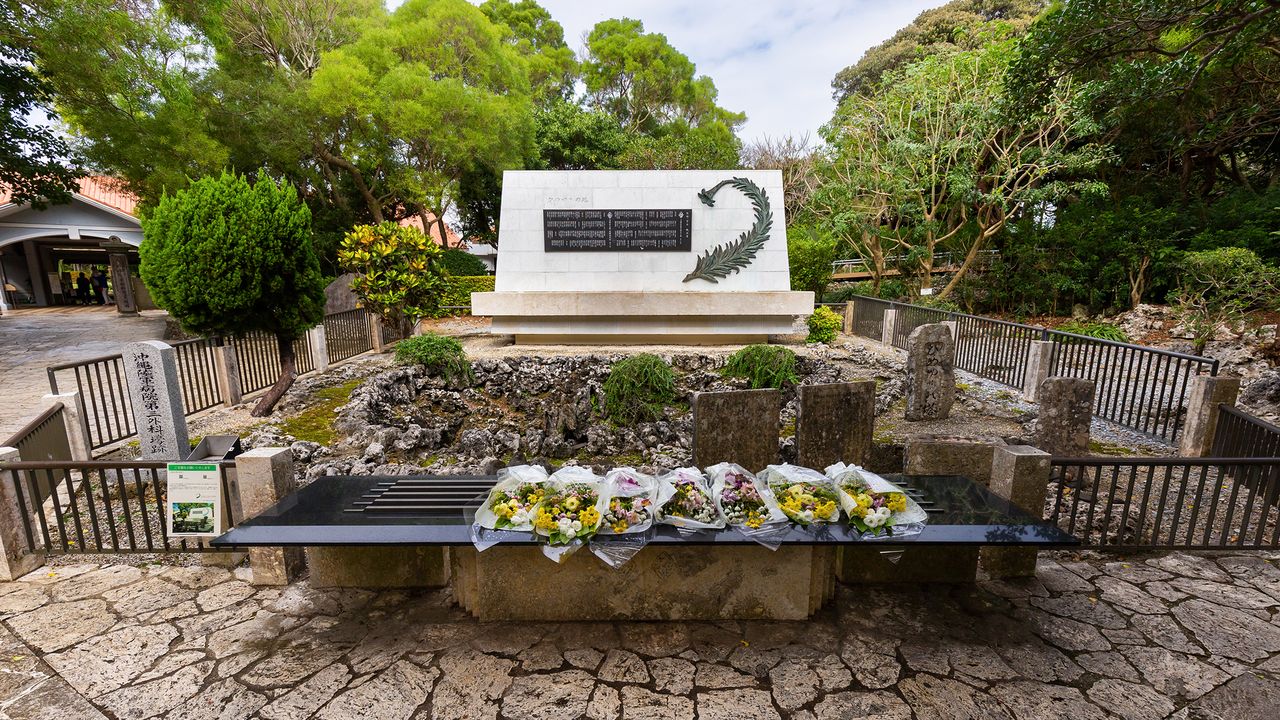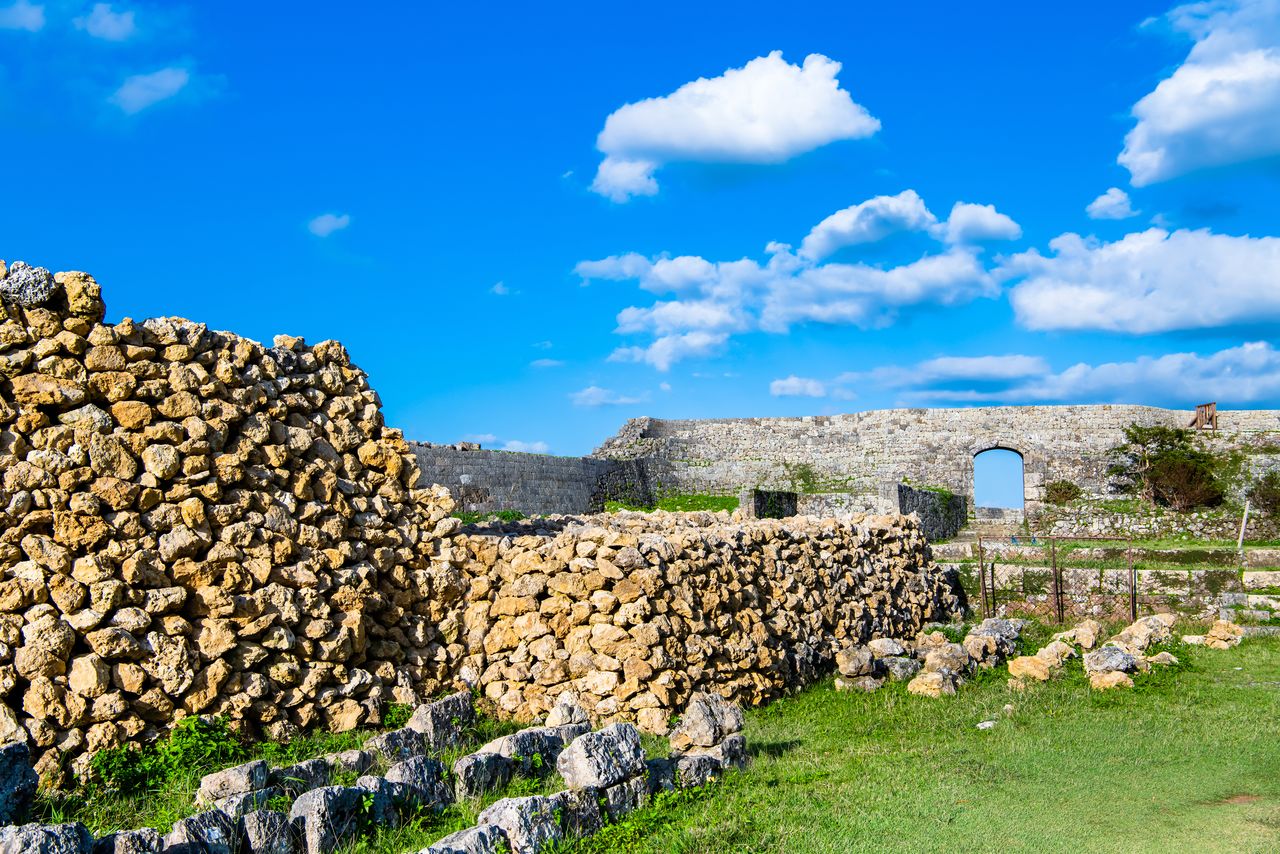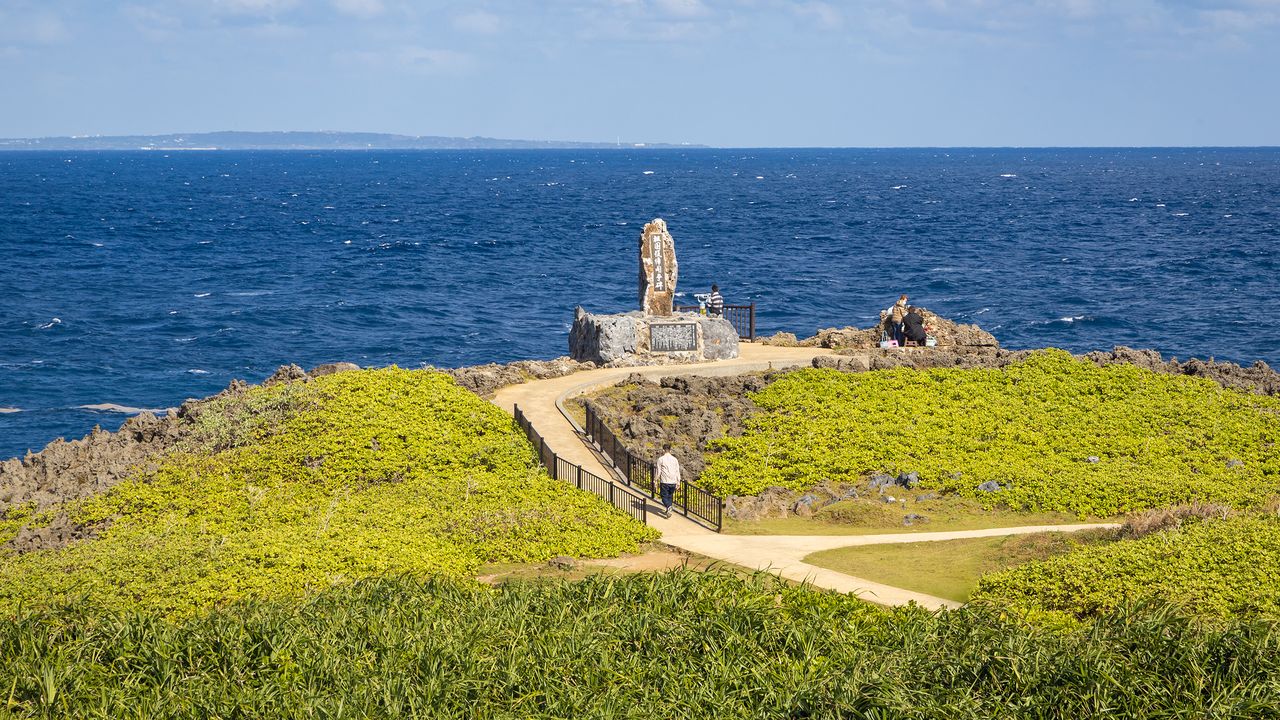
Okinawa Since 1945: A Photo Retrospective
Society Politics Economy- English
- 日本語
- 简体字
- 繁體字
- Français
- Español
- العربية
- Русский
1945
April 1: US forces land on Okinawa.
August 15: Japan surrenders, bringing an end to World War II.
1952
April 28: The San Francisco Peace Treaty comes into effect. The US military maintains control over Okinawa, the Amami Islands, and the Ogasawara Islands.
1959
June 30: A US fighter crashes into Miyamori Elementary School in Uruma, killing 17 people, including children, and injuring 200.
1969
November 21: Prime Minister Satō Eisaku and US President Richard Nixon agree at a summit meeting on the reversion of Okinawa to Japanese sovereignty.

Prime Minister Satō Eisaku (left) and US President Richard Nixon give a joint statement on Okinawa’s planned reversion to Japanese sovereignty. Photograph taken in Washington on November 21, 1969. (© Jiji)
1970
December 20: Sparked by a car accident involving US servicemen, residents of Koza riot and burn many US vehicles.
1972
May 15: Okinawa reverts to Japanese sovereignty. The currency changes from the dollar to the yen.
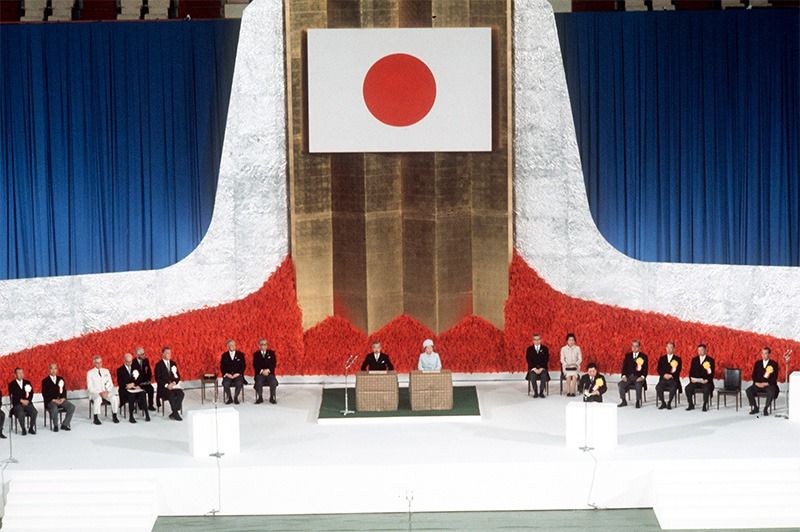
Emperor Shōwa attends a ceremony in Tokyo commemorating the reversion of Okinawa in May 1972. (© Jiji)
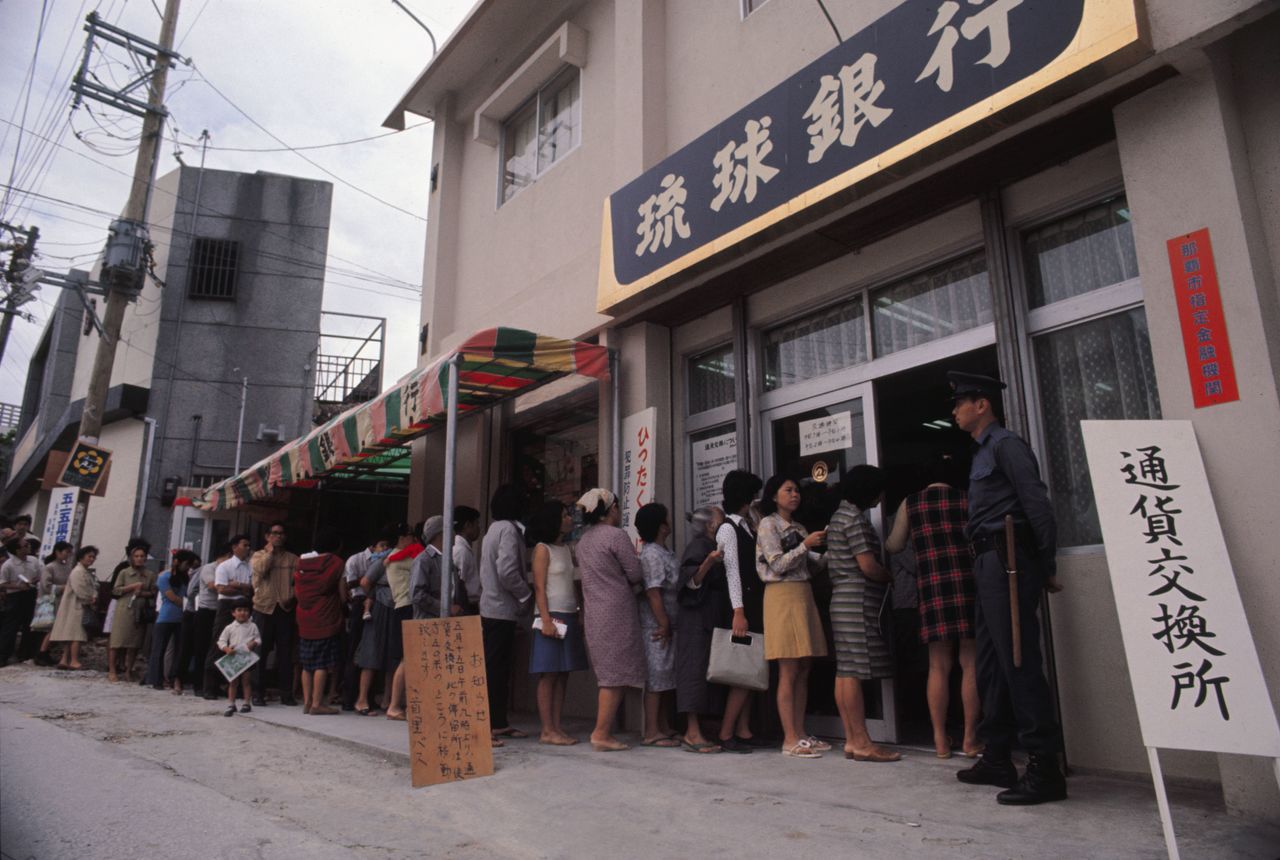
Citizens in Naha line up to change their dollars for yen ahead of Okinawa’s reversion. (© Jiji)
1975
July 20: Expo ’75 opens in Okinawa.
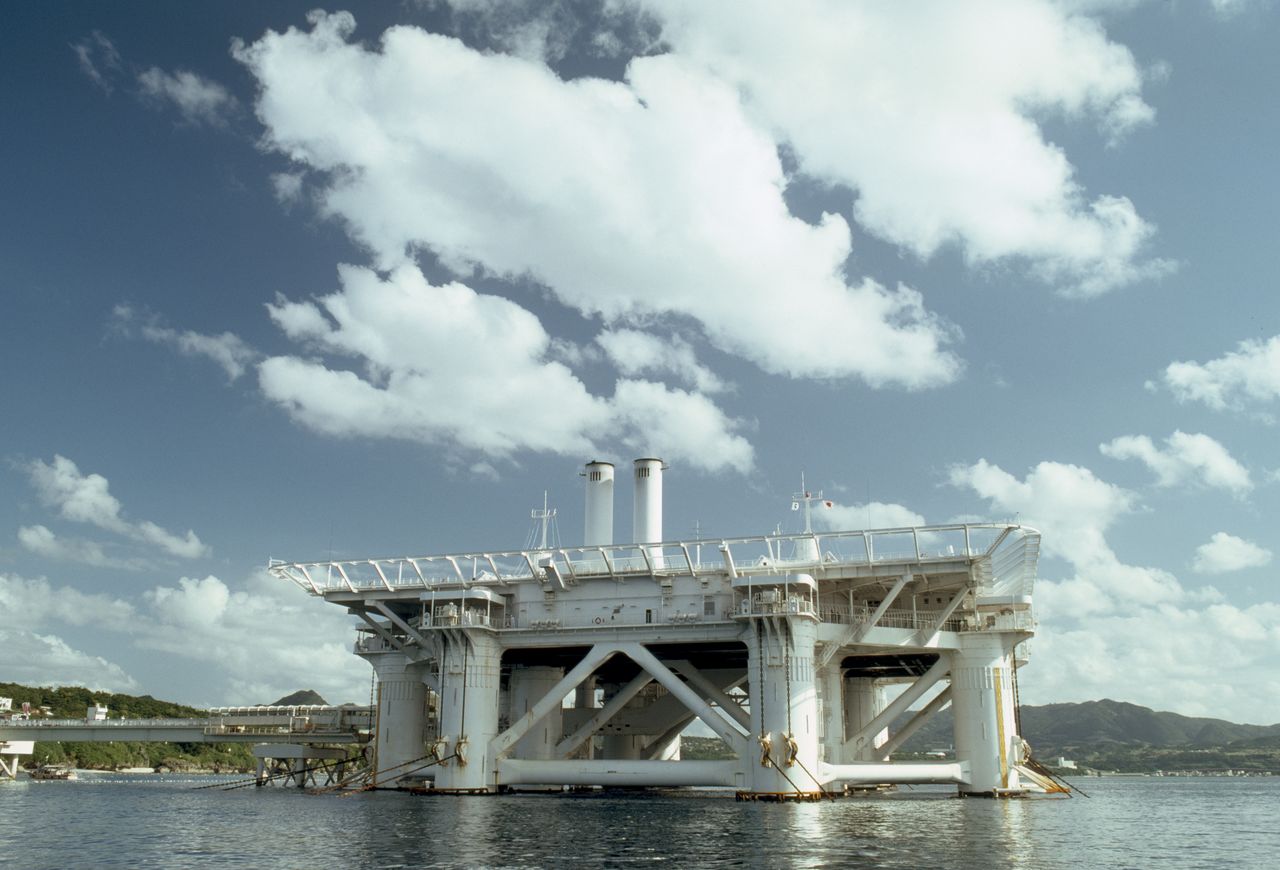
The floating city Aquapolis, costing more than ¥13 billion, was a symbol of Expo ’75. The top story was a giant deck, 100 meters long and 100 meters wide, while inside there were exhibition spaces. (© Jiji)
1976
October 10: Okinawan boxer Gushiken Yōkō defeats Juan Guzman by knockout in the seventh round to win the WBA light-flyweight title at his first attempt.
1978
July 30: Okinawa switches from driving on the right to driving on the left.
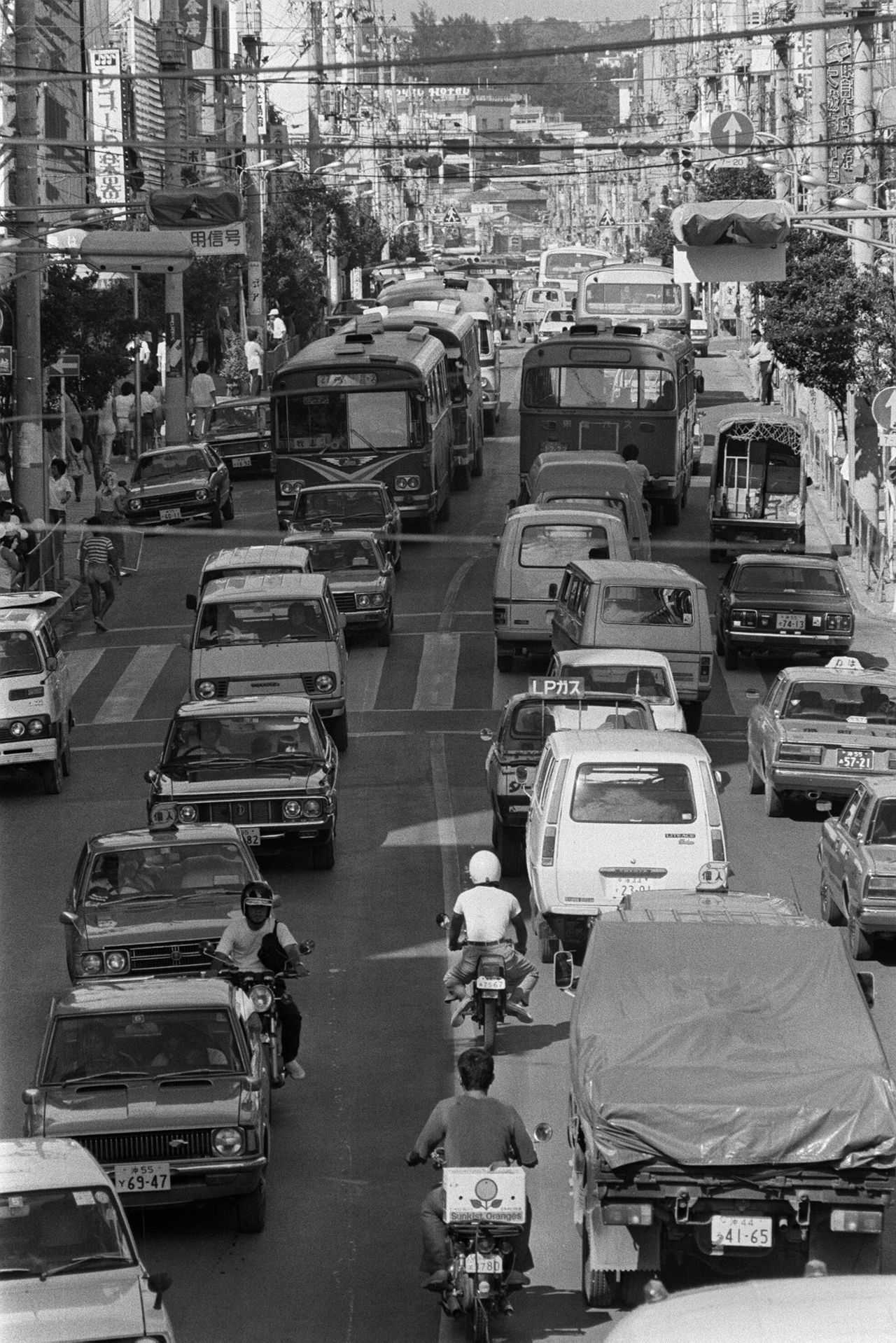
Okinawa vehicles drive on the right for the last day on July 29, 1978. (© Jiji)
1981
November 13: A new kind of bird discovered by the Yamashina Institute for Ornithology in Kunigami is named the Yanbaru kuina (Okinawa rail).
1985
April 13: Potter Kinjō Jirō becomes Okinawa’s first living national treasure.
1989
June 23: The Himeyuri Peace Museum opens to tell the story of the Himeyuri student corps—Okinawan women and girls, many of whom died after being mobilized to care for wounded Japanese soldiers toward the end of World War II.
1992
The main hall of Shuri Castle is reconstructed.
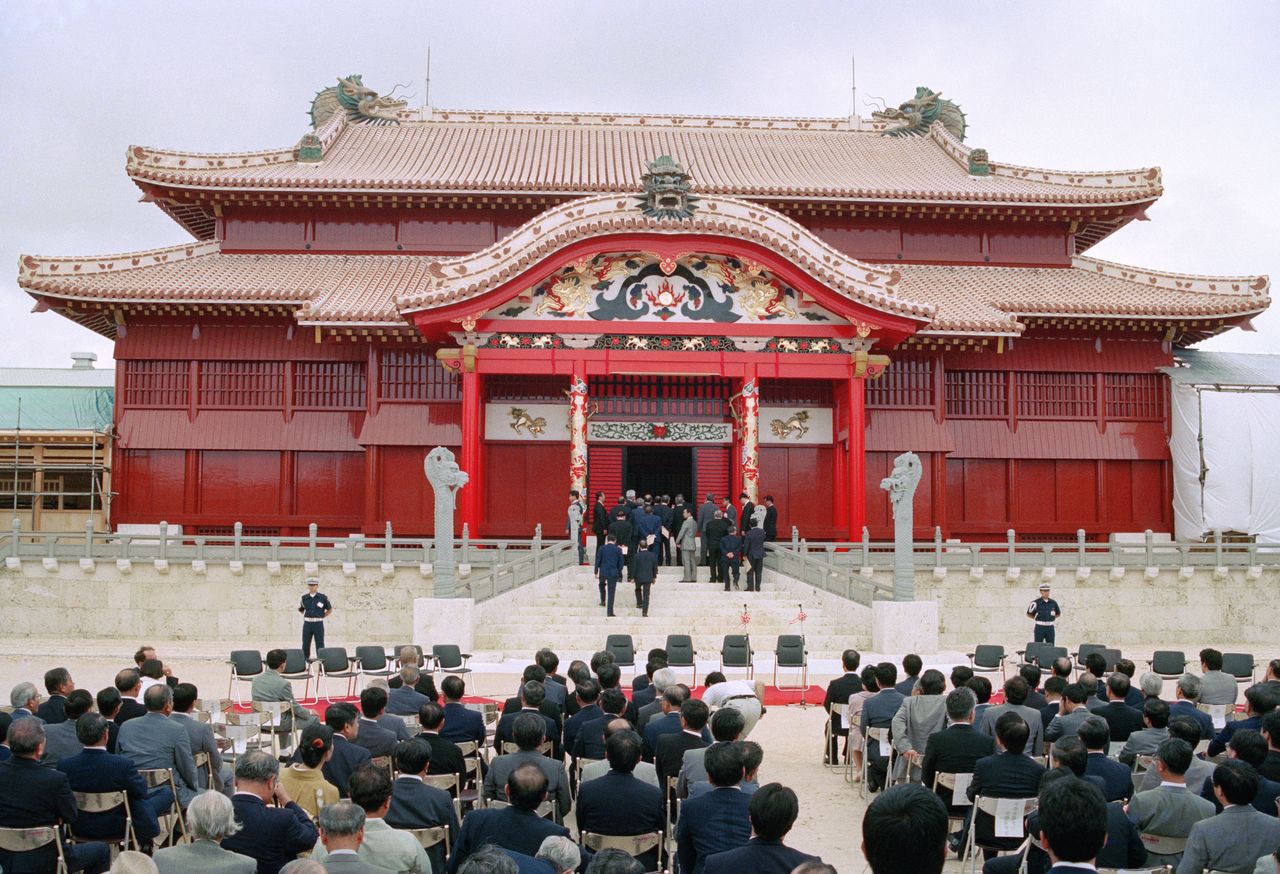
The main hall of Shuri Castle in Naha is publicly reopened to coincide with the twentieth anniversary of reversion on May 15, 1992. (© Jiji)
1995
June 23: The Cornerstone of Peace memorial is completed, inscribed with the names of those who lost their lives in the Battle of Okinawa.
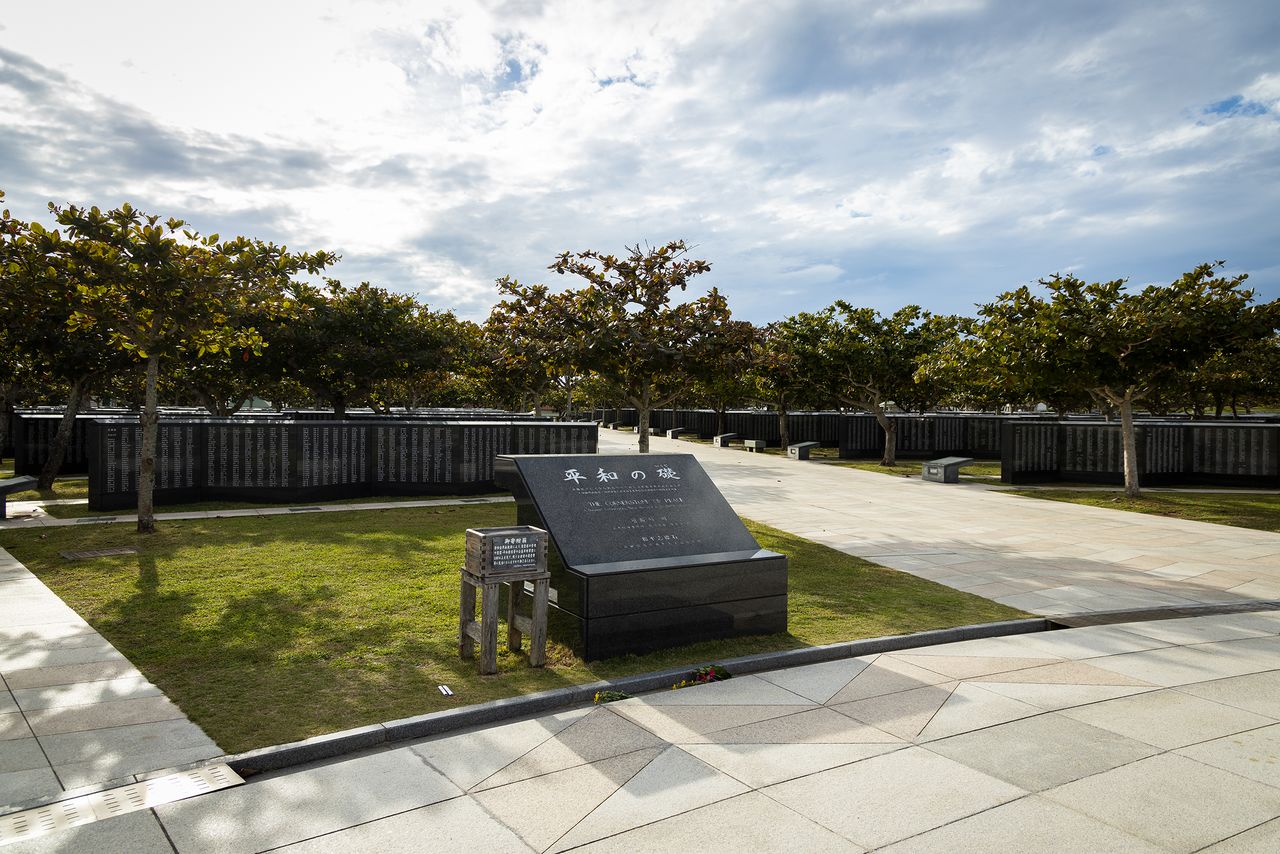
The Cornerstone of Peace in the Peace Memorial Park, Itoman, Okinawa.
September 4: Three US servicemen rape an Okinawan elementary schoolgirl.
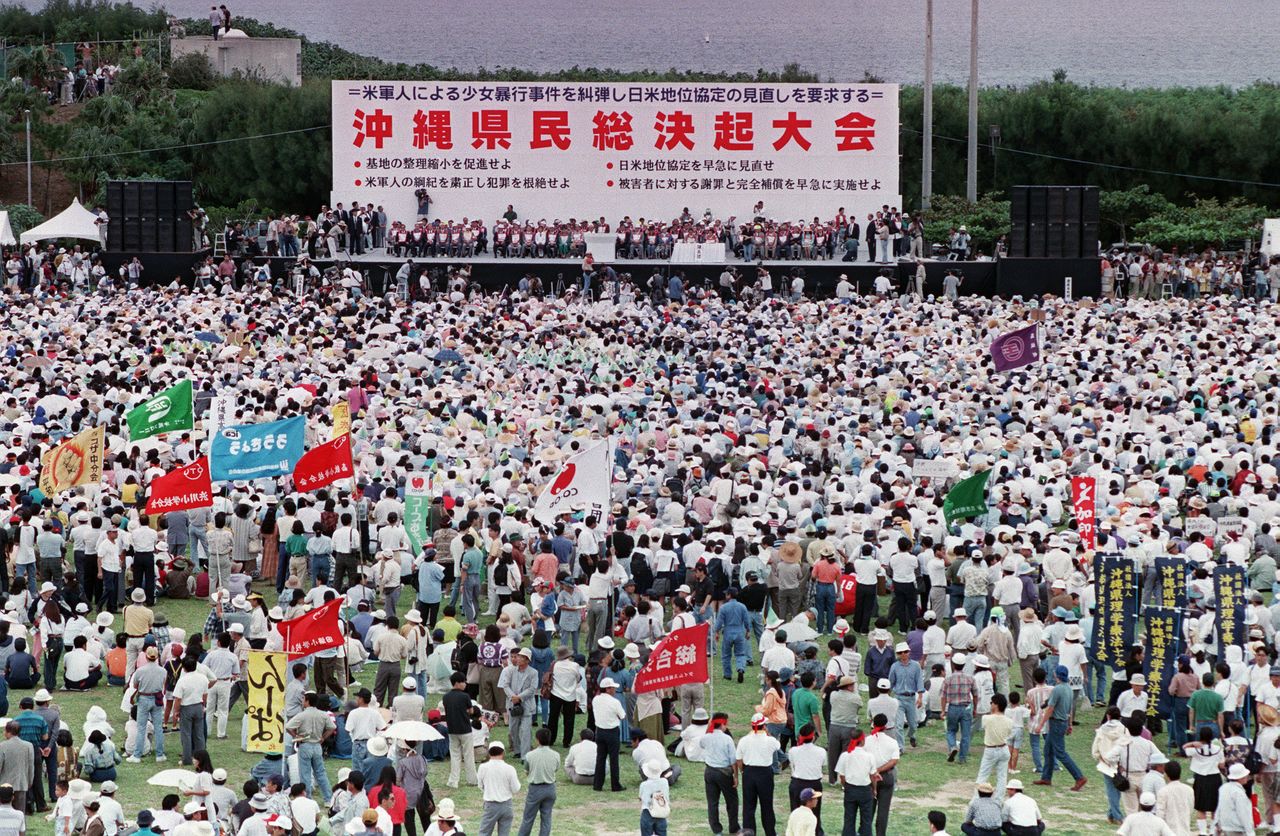
Okinawan citizens protest against the US military in Ginowan on October 21, 1995. (© Jiji)
1996
April 12: The Japanese and US governments agree on the reversion of US Marine Corps Air Station Futenma to Japan.
1999
April 4: Okinawa Shōgaku High School becomes the first team from Okinawa to win the National High School Baseball Championship.
November 22: Governor Inamine Keiichi announces that the Futenma facility will be relocated to the Henoko coastal district in Nago.
2000
July 21: The Group of Eight Kyūshū-Okinawa Summit begins.

Group of Eight leaders gather for a commemorative photo in Nago on July 22, 2000. (© Jiji)
December 2: Gusuku Sites and Related Properties of the Kingdom of Ryūkyū are registered as a UNESCO World Heritage site.
2004
August 13: A US military helicopter crashes in the campus of Okinawa International University.
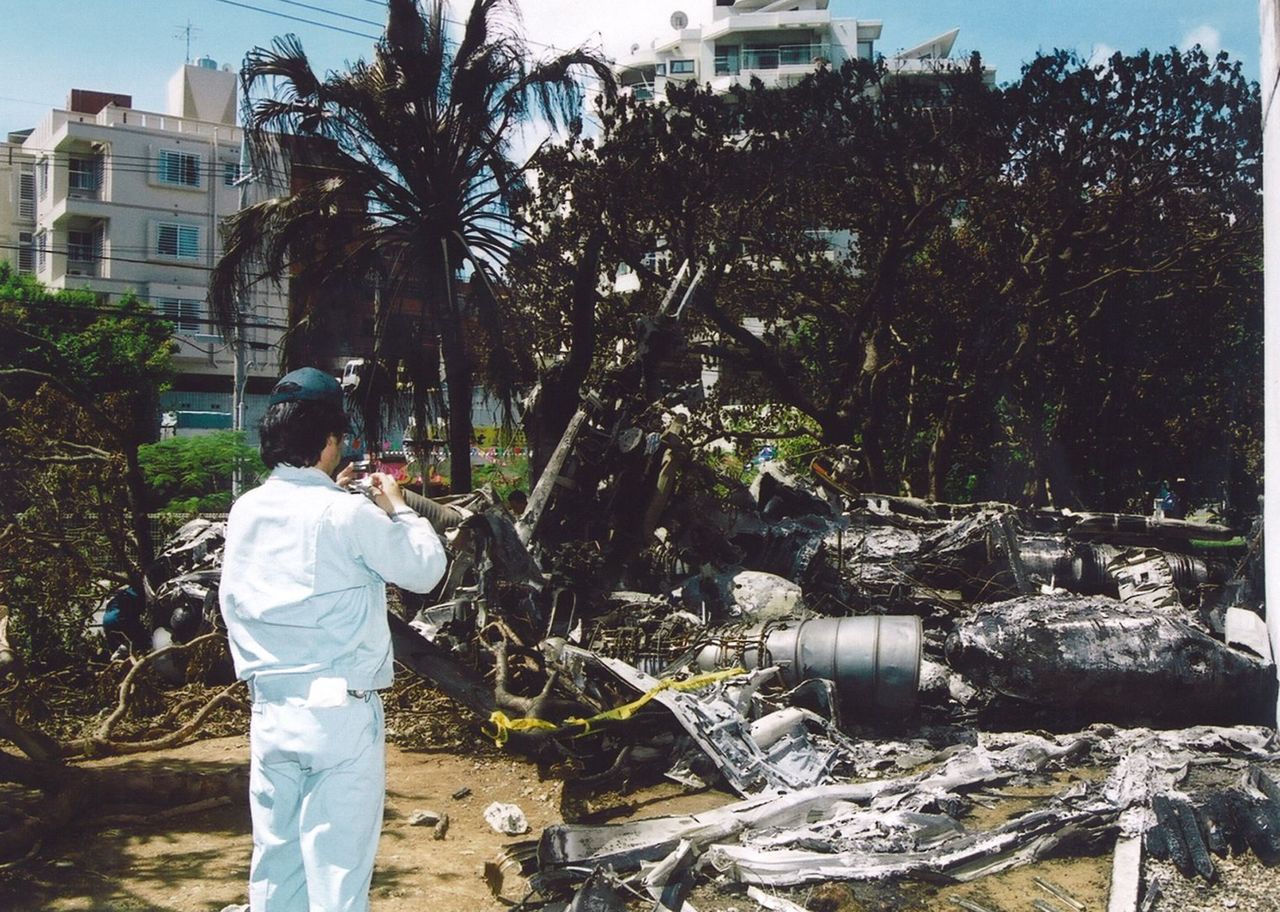
The remains of a US military helicopter near the main building of Okinawa International University on August 15, 2004. (© Jiji)
2009
July 19: Prime Minister Hatoyama Yukio of the Democratic Party of Japan says that the Futenma replacement site should be “outside of the prefecture at least.”
2010
May 10: Prime Minister Hatoyama abandons the idea of relocating the Futenma facility outside the prefecture.
2012
October 1: The first Osprey aircraft are deployed to Futenma. Accidents earlier in the year in Morocco and Florida contribute to stoking major local opposition.
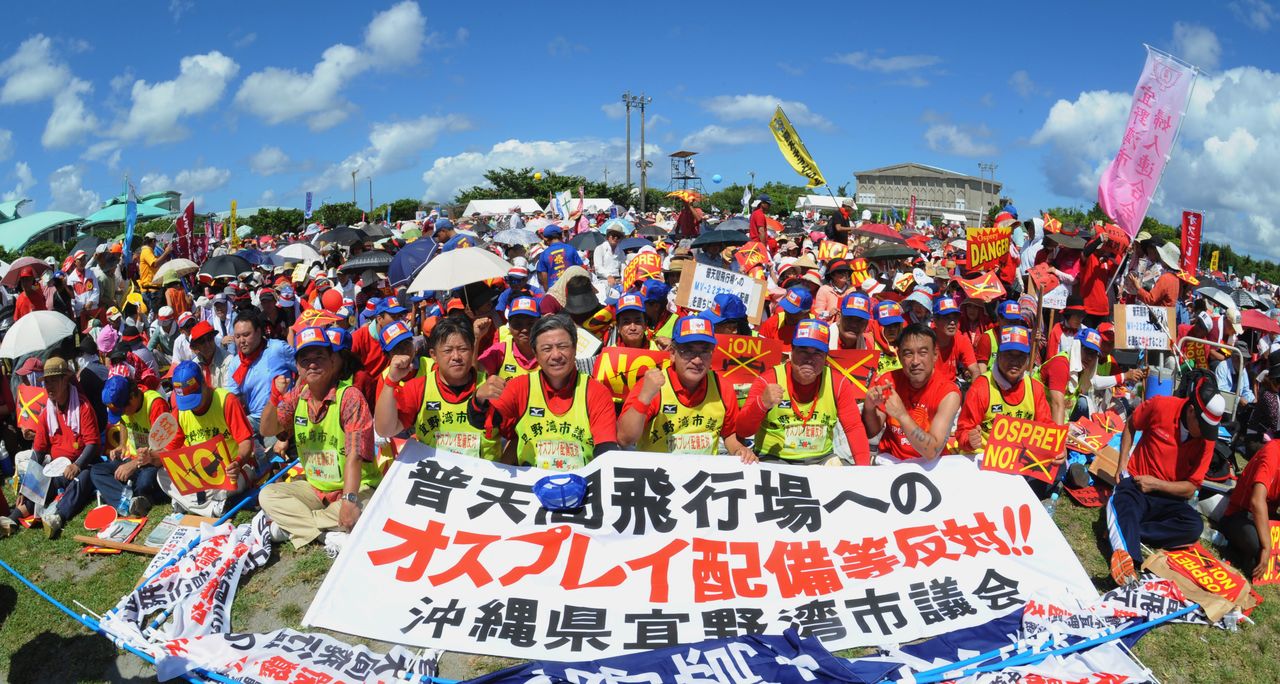
Okinawans demonstrate against the deployment of Osprey aircraft to Futenma on September 9, 2012. (© Jiji)
2018
September 30: Tamaki Denny is elected governor of Okinawa Prefecture on a platform of opposition to the relocation of the Futenma facility to Henoko.
December 14: The government begins placement of soil in landfill work for the planned replacement facility in Henoko.
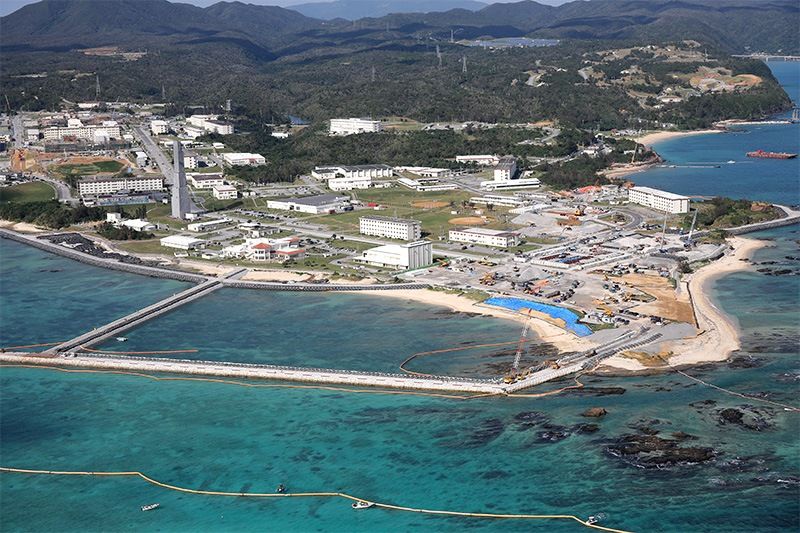
Landfill work for the US military replacement facility pictured in front of the US base Camp Schwab in Nago on December 14, 2018. (© Jiji)
2019
February 24: In an Okinawan prefectural referendum, 72% of voters state their opposition to the relocation of the Futenma facility to Henoko.
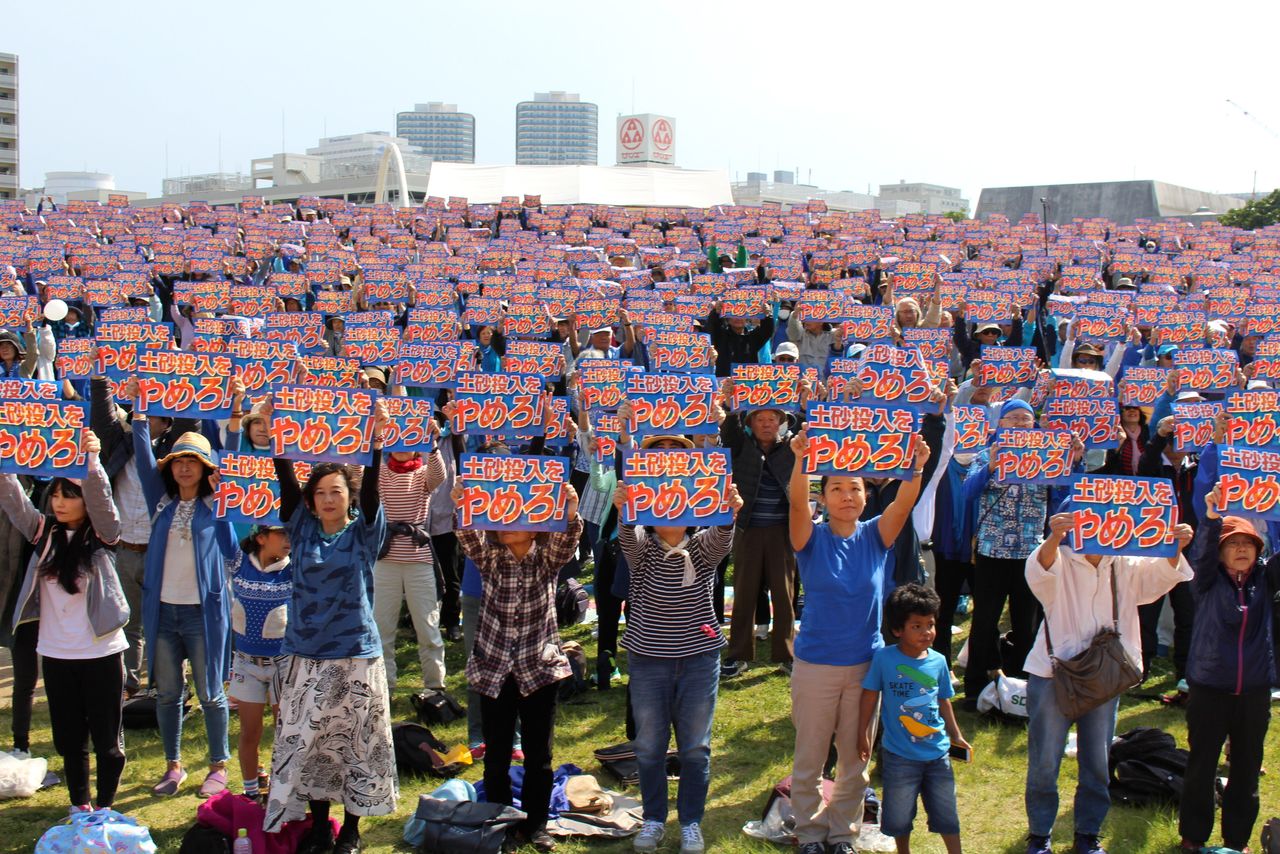
Okinawa residents protest against the relocation to Henoko on March 16, 2019. (© Jiji)
October 31: A fire destroys the main hall and other buildings at Shuri Castle.
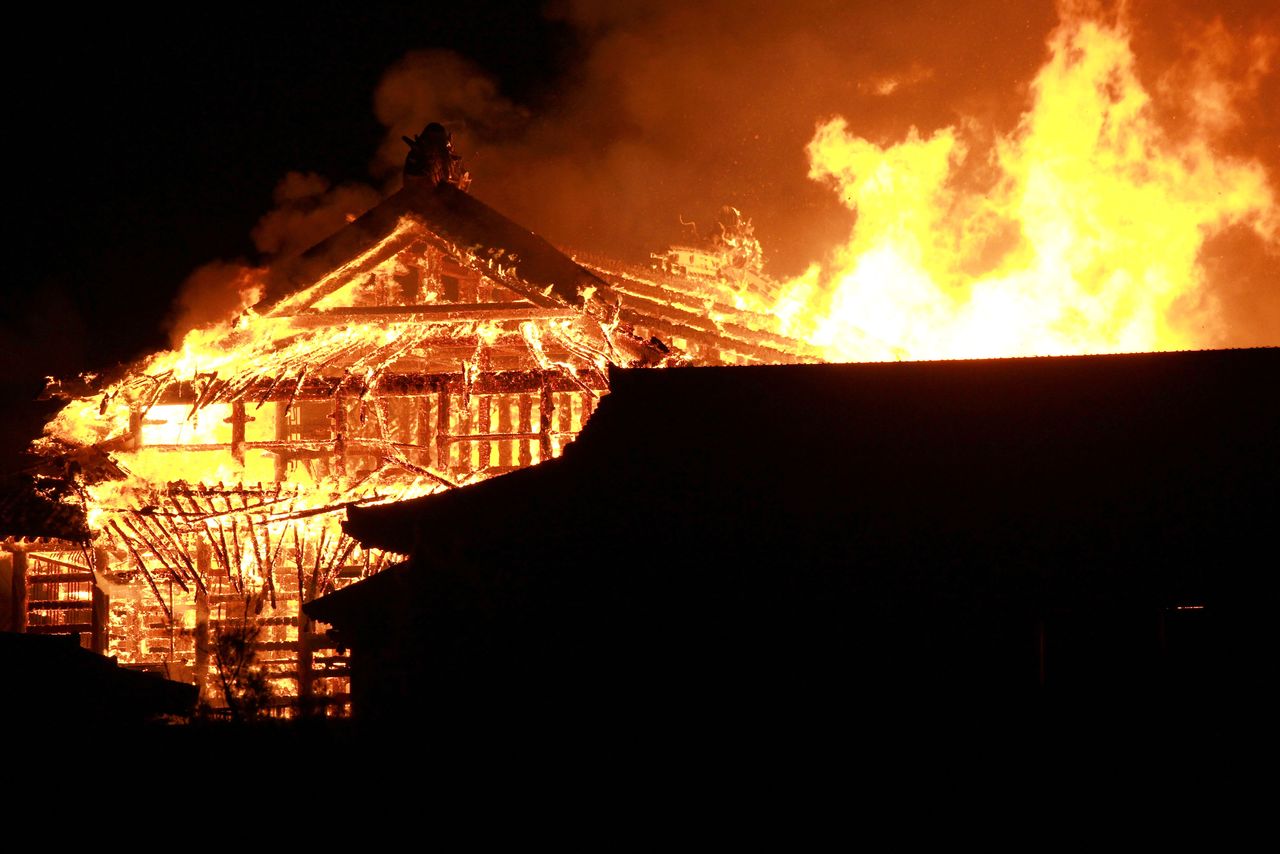
A fire causes destruction at Shuri Castle in Naha on October 31, 2019. (© Jiji)
2021
July 26: Amami-Ōshima Island, Tokunoshima Island, Northern Part of Okinawa Island, and Iriomote Island are registered as a UNESCO World Heritage site. Okinawa now has one cultural and one natural site.
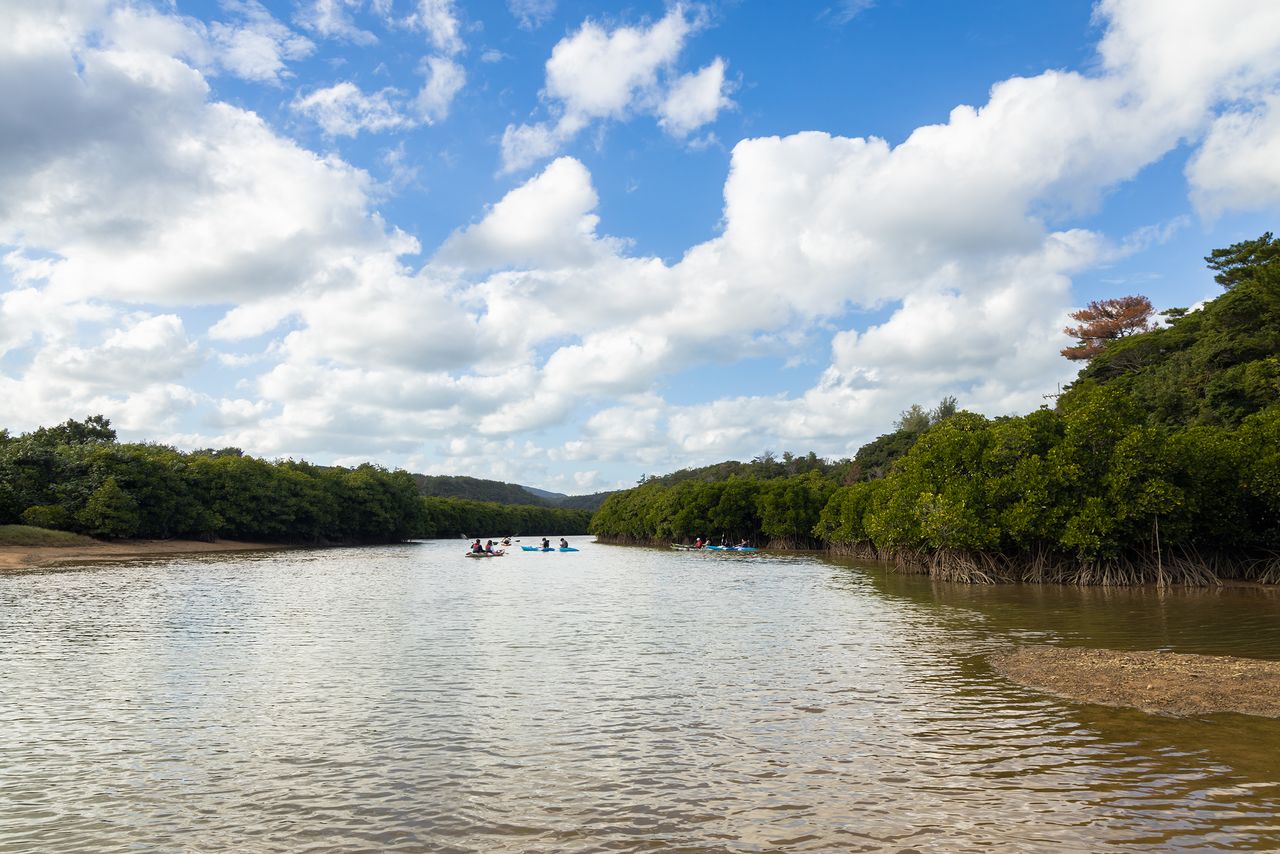
Mangrove forests by the Gesashi River in Kunigami.
(Translated from Japanese. Banner photo: The Monument in Commemoration of the Reversion of Okinawa to Japan at Cape Hedo on the northern tip of Okinawa Island. The island of Yoronjima in Kagoshima Prefecture is visible in the distance. Before reversion, signal fires used to be lit on both sides, expressing the wish it would happen one day.)
